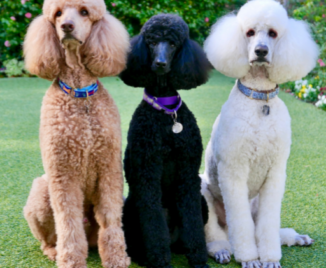Lightskin Dog: Understanding the Risks and Providing Helpful Suggestions
Introduction
As a passionate dog enthusiast, I believe it’s essential to shed light on a topic that often goes unnoticed – the risks associated with lightskin dogs. While these dogs possess a unique and beautiful coat color, they are more susceptible to certain health issues that require our attention and care. In this article, I will discuss the various risks that lightskin dogs face and provide helpful suggestions to ensure their well-being and happiness.
What is a Lightskin Dog?
Lightskin dogs, also known as light-colored or pale-coated dogs, have a genetic variation that affects the pigmentation of their skin and fur. This variation makes them more vulnerable to certain health concerns, particularly those related to sun exposure and skin sensitivity. Breeds such as the Dalmatian, Boxer, Bull Terrier, and American Eskimo Dog often exhibit lightskin characteristics.
Understanding the Risks
It’s crucial to understand the risks associated with lightskin dogs to provide them with the best care possible. By being aware of these risks, we can take proactive measures to minimize the potential harm and ensure their overall well-being.
Health Concerns
- Sunburn and Skin Damage: Lightskin dogs have less protection against the sun’s harmful UV rays due to their lighter skin pigmentation. Consequently, they are more susceptible to sunburn and skin damage, leading to discomfort, pain, and potential long-term consequences.
- Increased Risk of Skin Cancer:
The lack of melanin in lightskin dogs makes them prone to developing skin cancer, including melanoma. Regular exposure to the sun without protection significantly increases this risk. - Eye Problems:
Lightskin dogs are more susceptible to eye issues, including photophobia and increased sensitivity to light. The bright sunlight can cause discomfort and potential damage to their eyes, leading to vision problems if not addressed promptly. - Coat and Fur Issues:
Lightskin dogs may experience coat and fur problems such as dryness, discoloration, and increased shedding due to sun exposure and other environmental factors. These issues can affect their overall appearance and comfort.
Preventive Measures
To ensure the well-being of lightskin dogs and mitigate the risks they face, it’s crucial to implement preventive measures and provide them with the care they need. Here are some helpful suggestions:
- Providing Adequate Shelter:
Creating a shaded and comfortable environment for lightskin dogs is vital. Ensure they have access to shaded areas, covered spaces, or even indoors during peak sunlight hours. - Using Sunscreen:
Just like humans, lightskin dogs can benefit from sunscreen specifically formulated for dogs. Apply a dog-safe sunscreen on their exposed areas, such as the nose, ears, belly, and any areas with thin or no fur. - Protective Clothing for a Lightskin Dog:
Consider using protective clothing designed for dogs, such as lightweight shirts or vests that provide UV protection. These clothing items can help shield their sensitive skin from harmful UV rays. - Regular Veterinary Check-ups:
Schedule regular check-ups with a veterinarian who can monitor your lightskin dog’s health and address any concerns promptly. Regular examinations can help detect early signs of skin issues or other related problems. - Maintaining a Healthy Diet:
A well-balanced diet rich in essential nutrients, including vitamins and antioxidants, can support the overall health of lightskin dogs. Consult with your veterinarian to ensure your dog’s diet meets their specific nutritional needs.
Conclusion
While lightskin dogs may captivate us with their unique appearance, it’s essential to be aware of the risks they face due to their lighter pigmentation. By understanding these risks and implementing preventive measures, we can ensure their health and well-being. Providing adequate shelter, using sunscreen and protective clothing, regular veterinary check-ups, and maintaining a healthy diet are crucial steps in caring for lightskin dogs.
FAQs
- Q: Are lightskin dogs more prone to skin cancer than other dogs?
A: Yes, lightskin dogs are at an increased risk of developing skin cancer due to their reduced pigmentation and vulnerability to harmful UV rays. - Q: Can I use regular sunscreen on my lightskin dog?
A: No, regular sunscreen formulated for humans may contain ingredients that are toxic to dogs. It’s important to use sunscreen specifically designed for dogs. - Q: How often should I apply sunscreen on my lightskin dog?
A: Apply sunscreen on your lightskin dog every 2 to 4 hours when they are exposed to sunlight. Reapplication is necessary, especially after swimming or excessive sweating. - Q: Can a lightskin dog spend time outdoors during the day?
A: While lightskin dogs can spend time outdoors, it’s crucial to provide them with shaded areas and avoid peak sunlight hours when UV rays are the strongest. - Q: Are lightskin dogs more prone to eye problems?
A: Yes, lightskin dogs have increased susceptibility to eye problems due to their sensitivity to light. Taking measures to protect their eyes from excessive sunlight is important.
Remember, giving extra care and attention to lightskin dogs can help them lead healthy, happy lives while enjoying the companionship they bring to our homes.




